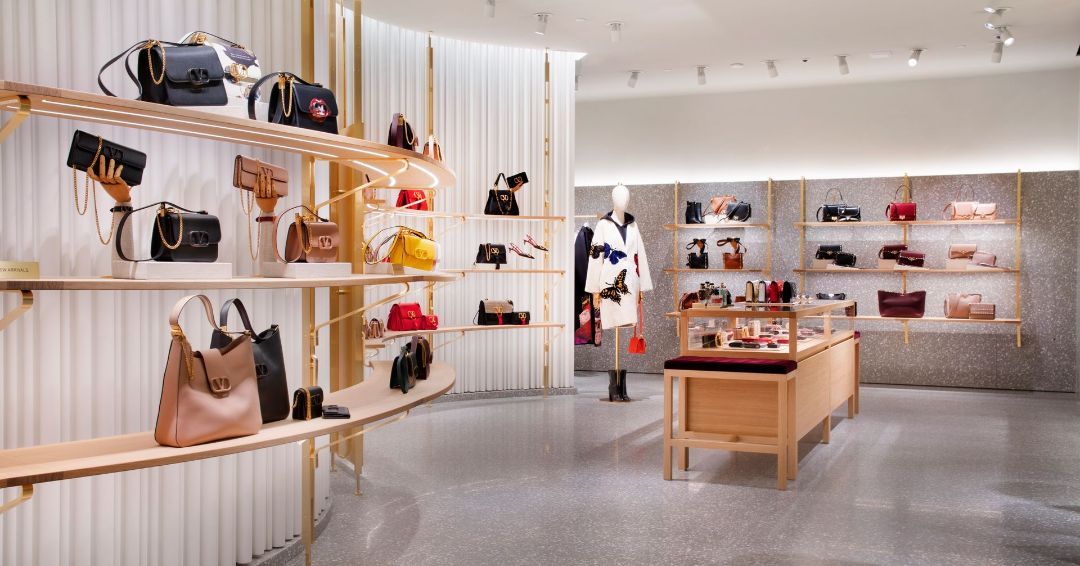Photography Tips for Store Owners
Photography Tips for Store Owners

Photography Tips for Store Owners
Photography, at its core, is the art of capturing light. Retail store owners can leverage this
art to transform their spaces into visual stories, enticing customers both online and inperson.
The key elements to consider are lighting, composition, and angles.
For lighting, observe how natural light interacts with your space throughout the day. Soft,
diAused light often works best to reduce harsh shadows and highlight products naturally.
Composition involves arranging elements in a way that guides the viewer's eye. The rule of
thirds, where the frame is divided into nine equal segments, is a fundamental technique.
Place key objects along these lines or their intersections for a balanced look. Lastly,
consider varying your angles. High and low perspectives can create dynamic images that
bring out different aspects of your retail environment.
Smartphone cameras have evolved to become powerful tools. They oAer convenience and
impressive results without the steep learning curve of professional cameras. However, for
those seeking finer control over images, a professional camera allows adjustments in
focus, exposure, and depth of field, offering a more polished result.
Preparing Your Retail Space for the Shoot
Before you capture your store's essence through a lens, it's crucial to prepare the space.
Start by decluttering. Less is often more in photography. Remove unnecessary items and
organize displays to create clean, appealing visuals. Props can add character and context
but choose them wisely to avoid a cluttered look.
Lighting plays a pivotal role in setting the mood. Utilize natural light where possible. If your
store lacks natural light, consider soft artificial lighting to mimic daylight. Avoid harsh
fluorescent lights as they can create unflattering shadows and distort colors.
Before the camera even comes out, the preparation of your retail space is vital. Start by
envisioning the story you want to tell. Is it about the latest collection, a seasonal theme, or
the overall vibe of your store? Once you have a clear vision, begin the transformation.
Decluttering and Organizing: First, declutter vigorously. Every item in the shot should
serve a purpose, either as a focal point or as a complementary element. Organize your
displays to be visually pleasing. Consider symmetry and balance - how your products are
arranged can greatly impact the aesthetic appeal of your photos.
Setting the Scene with Props and Decor: Introduce props and decor that align with the
theme of your shoot. For instance, if it's a winter collection, maybe add some subtle winterthemed
elements. However, be cautious not to overdo it. The props should enhance, not
overpower, your products.
Lighting Adjustments: Adjust your lighting to suit the mood. If you’re using artificial
lighting, consider investing in adjustable lights. You can manipulate the intensity and
angles to create the perfect ambiance. Soft light, ideally diffused, works wonders in
bringing a warm and inviting feel to your space.
Creating a Focal Point: Choose a focal point in your space. This could be a particularly
well-designed display or a new product range. The focal point should draw the viewer's eye
naturally and serve as the centerpiece of your photographs.
Capturing Your Products in the Best Light
Product photography is an art that demands attention to detail. When capturing individual
products, focus on clarity and texture. Close-up shots bring out details like fabric quality
and craftsmanship. For group shots, arrange products to tell a story or suggest usage.
Light is your best ally. Experiment with diAerent lighting setups to find what best
accentuates your products. Soft, indirect light can reduce glare and bring out the true
colors of your items. Pay attention to color balance to ensure the product colors are
accurately represented in the photos.
Backgrounds should be simple and complement the product. A neutral or contrasting
background can make your product stand out without distracting the viewer.
The way you capture your products can significantly influence customer perception. It's not
just about taking a clear photo; it's about storytelling and evoking emotion.
Detailing and Texture Focus: When capturing close-up shots, pay special attention to the
textures and fine details of your products. Use a macro lens if available, or a camera setting
that allows you to capture the intricacies. This level of detail can communicate the quality
and craftsmanship of your products.
Lighting Techniques for Product Photography: Experiment with different lighting
techniques. Side lighting can create interesting shadows and highlights, emphasizing
texture and depth. Backlighting, on the other hand, can create a silhouette effect, ideal for
transparent or translucent products.
Color Representation and White Balance: Accurate color representation is crucial. Pay
attention to white balance settings on your camera to ensure the colors in your photos are
as true to life as possible. This is especially important for online stores, where customers
rely solely on images to make purchasing decisions.
Arranging Products in Group Shots: When arranging products for group shots, think about
how they relate to each other. Group complementary items together to suggest usage or
lifestyle. Create scenes that tell a story or evoke a mood. This not only showcases your
products but also gives customers ideas on how they can use them.
Consistency in Style and Theme: Maintain consistency in your photography style and
theme throughout all your product shots. This consistency helps build your brand’s visual
identity, making your products immediately recognizable to your audience.
Showcasing the Store Layout and Design
Capturing your store's overall layout requires a different approach. Wide-angle shots are
beneficial here, offering a view of the entire space. These shots give potential customers a
sense of your store's size and ambiance.
When focusing on specific sections, use your composition skills to guide the viewer's eye.
Highlight areas like unique displays, signature products, or cozy corners. Emphasize the
store's design elements – be it the rustic wood shelves or the modern minimalist décor.
Incorporate storytelling elements in your shots. Maybe there's a vintage cash register that
has a story, or a corner where community events happen. These details add depth to your
images, making them more than just visuals – they become narratives of what your store
represents.
Post-Processing and Editing
Post-processing is a critical step in photography. It's where good images turn great. Start
with basic adjustments like exposure, contrast, and saturation to enhance your photos'
overall look. Be mindful not to overdo it; the goal is to make your images pop, not look
artificial.
Editing software, from user-friendly apps like Adobe Lightroom to more advanced tools like
Photoshop, oAer a range of functionalities. Even simple adjustments like cropping for
composition, adjusting brightness, and color correction can significantly improve the
quality of your photos.
Remember, authenticity matters. Retain the natural feel of your store and products. Overedited
images can mislead customers, potentially affecting your store's credibility.
Utilizing Photos for Marketing and Online Presence
Your photos are powerful tools for your digital marketing strategy. Use them on your
website to give customers a virtual tour of your store. On social media, they can be part of
storytelling about your brand, products, and the unique experience your store oAers.
Photos also play a vital role in online directories and Google My Business listings. They can
significantly impact a customer's decision to visit your store. Ensure you update these
platforms regularly with high-quality images.
When incorporating photos into marketing materials, always ensure they align with your
brand's message and aesthetic. Consistency across all platforms strengthens your brand
identity and helps you connect more deeply with your audience.
Legal Considerations and Ethics
When using photography for business, legal considerations are paramount. If you're
featuring customers or staff in your photos, ensure you have their consent. This is not just a
legal requirement but also an ethical consideration.
Understand copyright laws, especially when using music, artwork, or other branded
products in your shots. In some cases, you may need permission from the creators or rights
holders. Always err on the side of caution to avoid potential legal issues.
Conclusion
In the digital age, visual storytelling is more important than ever for retail businesses.
Through photography, you can create a compelling narrative about your store and products,
connecting with customers in meaningful ways. The tips provided here are just the starting
point.
We encourage you to experiment with different techniques and find what works best for
your unique space. Remember, the goal is not just to take pictures, but to tell the story of
your store, your brand, and your products through the lens of a camera. Happy shooting!

